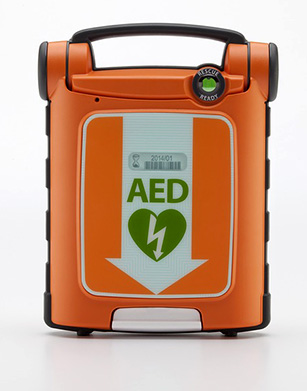Instituting an emergency action plan

The most important responsibility of individuals who have administrative duties with athletic departments and sport organizations is not to win games. Most assuredly, it’s critical to establish and maintain a safe environment for training and competition.
This is an integral component of the risk management plan. The manner in which an athletic department manages emergency situations is central to demonstrating this important aspect of its mission.An emergency action plan (EAP) is critical for every venue at which practice sessions, conditioning activities and competitive events are conducted. An EAP is a written document that outlines procedures to be implemented and personnel responsibilities in the event that an emergency arises.
Athletic trainers, coaches, strength and conditioning personnel, and administrators should be prepared to implement the EAP for each venue. When an emergency arises, the EAP ensures that effective and efficient actions are carried out.
Every EAP is developed for the purpose of maximizing the potential for successful management of an unexpected event. People involved might include athletes, coaches, fans and administrators who can help to manage the situation if the steps of the EAP are clearly communicated.
Managing the situation
Post the EAP at every venue so that coaches, players, officials and fans have access to important information when an emergency occurs. Include specific directions and the order in which they should be implemented.
Essential steps for managing the situation include:
- Proper assessment of the circumstances.
- Determination of the urgency for advanced emergency care and transportation.
- Implementation of necessary life support procedures.
- Communication with emergency medical personnel.
- Facilitation of emergency medical personnel access to the site.
 The person who manages these steps varies, depending on the availability of trained medical personnel. The most important piece of equipment to have available for a medical emergency is an automated external defibrillator (AED). An AED needs to be regularly maintained and readily accessible at every athletic event.
The person who manages these steps varies, depending on the availability of trained medical personnel. The most important piece of equipment to have available for a medical emergency is an automated external defibrillator (AED). An AED needs to be regularly maintained and readily accessible at every athletic event.
Include the participation of all athletic department personnel in the EAP development process. Typically, an athletic trainer is responsible for initial development of an EAP, which is reviewed and approved by the team physician.
The next step is the review of the EAP with local emergency medical services (EMS) personnel who need to understand the initial care that’s to be implemented prior to their arrival on the scene and the transfer of care for patient transportation. This communication is vital to avoid the confusion and conflict that could arise during the process of transferring care of an injured athlete to EMS personnel. Engaging local EMS personnel in EAP development establishes their capabilities, which might have implications for the procedures that need to be administered prior to the arrival of EMS personnel.
The final step in the EAP development process is a final internal review approval by a committee of designated individuals who understand the importance of having documentation of the procedures to be followed.
Rehearsing the procedures
After an EAP is developed, rehearse its procedures. Do this by staging a simulated emergency scenario at a practice session. The involved personnel can be given notification that this EAP rehearsal is taking place.
Having an individual to portray a patient with a given condition provides a useful and necessary test of the effectiveness of an EAP.
For example, simulation of a cardiac arrest determines the amount of time required to bring an AED to the scene. Document the results of such rehearsals. EAP rehearsal is recommended at least once per calendar year for each venue. Failure to perform an EAP rehearsal is like putting an athlete in a crucial game situation without practicing beforehandthe likelihood for success is low.
Whenever an EAP has been implemented in an actual emergency situation, conduct a formal review of its effectiveness. Every time EMS personnel are called upon to respond to a suspected or actual medical emergency, have an EAP committee discuss what happened. Specifically, the committee identifies what worked well and any improvements to be made in the existing procedures, including facility modifications for improved access or the availability of appropriate equipment.
The health and well-being of all student-athletes is a high priority for athletic administrators. We recommend establishing EAPs for every athletic facility and venue. Prioritization of the EAP development process makes an important difference in the outcome of an unexpected event.





